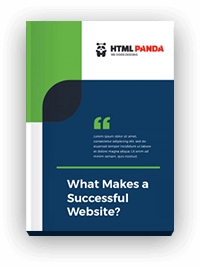PSD to HTML conversion is one of the most important stages that enable your website to remain sleek, attractive, user-friendly & fast loading. In this blog post, we’ll discuss all the importance of PSD to HTML conversion & its benefits.
Is your website helping or hurting your business in a competitive digital market?
In an era defined by constant online interaction, having a high-performing website is no longer a luxury. It is a strategic necessity.
Many business owners invest in digital marketing and brand design but overlook the technical structure of their website. This is where the importance of building a website from well-crafted design files becomes clear.
PSD to HTML conversion bridges the gap between visual design and functional development. It transforms a Photoshop design file into a coded website that is interactive, responsive, and optimized for performance.
According to the source, there are millions of websites running, and around 4.33 billion people are accessing the internet as of July 2019.
It gives a clear picture that how competitive our online marketplace has become. Thus, in this stance, every business owner, who is thinking of launching the web pages, should consider approaching PSD to HTML.
In this article, you will learn what PSD to HTML means, how the process works, and why it carries real business value. You will also find answers to common questions asked by decision-makers during the web development process.
What is PSD to HTML Conversion?
PSD to HTML refers to the process of converting a static design file into a fully functional website. This step is essential in transforming a visual concept into a usable and responsive digital experience.
PSD stands for Photoshop Document. It is the file format created using Adobe Photoshop. Designers use PSD files to create visual layouts, define brand elements, and structure page components.
HTML stands for HyperText Markup Language. It is the foundational code used to structure content on the web. HTML works alongside CSS and JavaScript to display, style, and animate web pages across devices.
The conversion process begins with a completed design in Photoshop. This design represents the intended appearance and layout of the website before any code is written.
Next, skilled developers translate the visual design into clean HTML code. They also use CSS for styling and JavaScript for interactivity. The result is a web-ready page that matches the original design with high accuracy.
This process ensures that the website reflects your brand identity and performs across browsers, screen sizes, and devices. A precise conversion can improve performance, support SEO efforts, and create a better experience for users.
You can explore a more detailed explanation of this process on our PSD to HTML conversion page.
The PSD to HTML Conversion Process: Step-by-Step
The PSD to HTML process follows a clear sequence of tasks. Each step plays a specific role in turning a static visual into a responsive website that performs across platforms.
 Step 1: Designing in Photoshop (PSD)
Step 1: Designing in Photoshop (PSD)
The process begins with design. A graphic designer uses Photoshop to create a visual layout. This includes images, typography, icons, buttons, and content sections. The layout defines how the website will look.
Each layer in the PSD file represents a visual element. These layers must be well-organized and labeled to support a smooth conversion process.
Step 2: Slicing the PSD into Components
Once the design is complete, it is divided into individual elements. This step is called slicing. It involves separating design components like headers, footers, buttons, and banners.
Slicing makes it easier to code each section without losing visual accuracy. It also reduces file sizes and ensures faster page loading.
Step 3: Coding with HTML, CSS, and JavaScript
After slicing, developers begin writing the code. HTML defines the structure. CSS handles the visual appearance. JavaScript adds interaction and motion.
Manual coding is often preferred for accuracy and flexibility. It allows developers to follow best practices and meet specific performance and accessibility goals.
Step 4: Assembling and Testing the Website
Once the pages are coded, the next step is integration. Developers bring together the HTML, CSS, and JavaScript files to assemble a complete webpage.
The site is then tested across browsers, devices, and screen sizes. This ensures it works as expected for all users and meets industry standards.
Manual vs. Automated PSD to HTML Conversion
Choosing between manual and automated PSD to HTML conversion affects the quality, performance, and flexibility of your website.
Manual conversion involves developers hand-coding each element using HTML, CSS, and JavaScript. This approach requires time and technical expertise but delivers precise results.
Automated tools generate code from PSD files using software or online platforms. These tools reduce the time needed but offer less flexibility in structure and output.
Each method has its advantages and limitations depending on business priorities.
Aspect |
Manual Conversion |
Automated Conversion |
Pros |
|
|
Cons |
|
|
Common Tools |
|
|
Why is PSD to HTML Important for Your Business?
Investing in PSD to HTML conversion is not only a technical decision. It is a strategic move that strengthens your brand, enhances performance, and supports long-term growth across digital channels.

1. Brand Consistency
When your design is implemented with precision, the website reflects your brand exactly as envisioned. This ensures consistency across your online presence.
Visual alignment builds trust. It reassures users that they are interacting with a professional and credible brand from the first visit onward.
2. Performance
Hand-coded HTML ensures a clean, optimized structure. This results in faster loading times, which can reduce bounce rates and increase user engagement.
Speed also influences search engine ranking. Google favors websites that perform well across devices and load without delays.
3. Responsiveness
Modern users access websites on mobile phones, tablets, and desktops. A responsive site adjusts its layout to fit any screen, providing a seamless experience.
PSD to HTML allows developers to code with responsiveness in mind from the start. This improves usability and customer satisfaction.
4. Maintainability
Websites built through structured HTML are easier to update and scale. Developers can modify content, layout, or design without breaking the overall structure.
This flexibility is important for businesses that want to grow their digital offerings over time without starting from scratch.
5. W3C Compliance
Following W3C standards ensures your website is accessible, readable by all browsers, and easier to troubleshoot. It also improves your chances of ranking higher in search results.
Accessibility is a legal and ethical priority. Compliance helps meet regulations and ensures your site is usable by all visitors.
6. Competitive Edge
A well-developed website gives you an advantage in markets where customer attention is limited. Clean design, speed, and responsiveness help you stand out.
Customers notice when a website is fast and easy to use. These qualities influence buying decisions and support conversion goals.
Closing Thoughts
A high-performing website begins with a strong foundation. PSD to HTML conversion plays a key role in transforming visual ideas into usable, scalable digital platforms that reflect your business goals.
It ensures that your brand identity is not only seen but experienced through responsive design, clean structure, and fast performance. These factors influence how users perceive your business and how search engines rank your website.
Leaders often focus on marketing, content, and traffic. But without proper structure, even the best campaigns can underperform. That is why investing in the right development process matters.
If you are planning a new website or redesign, consider the value of working with experts who prioritize quality code, performance, and long-term maintainability.
We would love to here your comments & questions about this blog post. Send us your thoughts by completing the contact form.










